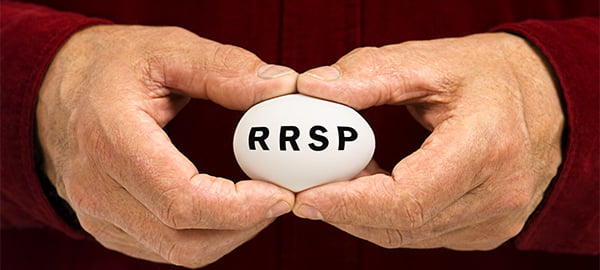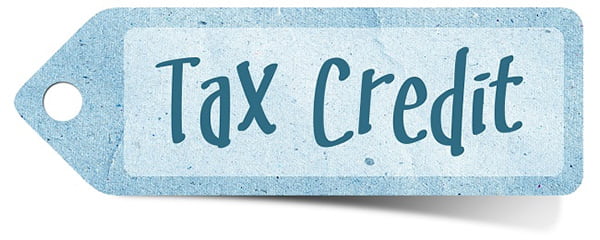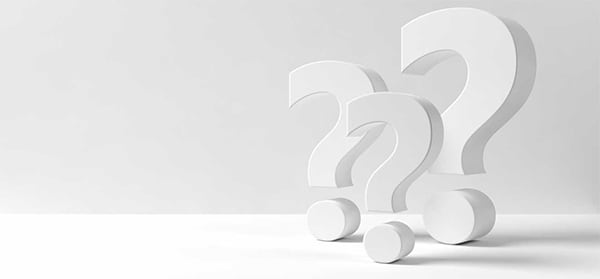Buying a house is more than a big decision. It’s a commitment to building a home that is suitable for you and your loved ones for decades potentially.
It is an exciting feeling, one that as you go through multiple open houses, peruse the internet, and dig through the vast array of listing options, will help you discover what kind of home is right for you.
But this is also a difficult process. From securing a mortgage to bidding wars, securing your first home will take some time, research, funding, and effort.
Being a first time home buyer is also daunting in that there is so much information available, and it’s hard to condense it down into the essentials. There are fees, insurance costs, and other financial factors that have to be taken into consideration.
While most of this information is for first time home buyers, it’s suited for anyone that’s looking for a helpful comprehensive buying plan. Without further ado, let’s dig right into the information you need to consider before you make one of the biggest purchases of your life.
RRSP Home Buyers Plan Manitoba

The Canadian government has a range of programs that help first time home buyers plant their roots as effortlessly as possible. Even as recently as this month, news broke that a new program oriented toward Manitoba first time home buyers would shake things up.
First Time Home Buyer Manitoba Requirements And Rules
The program, comes with a few qualifications that must be met, the most important of which is that the total household income must be under $120,000 a year.
But, the good news is that the government will be offering an interest free loan on homes:
- 5% of the house worth if it’s an already established house
- 10% of the house price if a new one is being built within guidelines
For many families, it’s an opportunity to substantially cut down on the total down payment made when first getting the ball rolling.
But, there are alternatives.
If you haven’t bought a new home within a four-year time span, (or you’ve lived with your spouse around that time span), then you might be eligible for the RRSP Home Buyers Plan. Here’s how it works:
You Have To Be Qualified
You can qualify for RRSP Home Buyers Plan if you are qualified “first time home buyer.” In fact, you can qualify as a first time home buyer more than once in your life. As we stated earlier, as long as you or your spouse hasn’t purchased a home that was your primary residence within four years, you can be eligible for the RRSP Home Buyers Plan.
In the 2019 Federal Budget, there is a provision that allows you to be eligible for the RRSP Home Buyers Plan (regardless if you meet the first time home buyer requirements or not) if you’ve “experienced a break down in a common-law partnership or marriage.” However, this provision won’t be available until the end of 2019.
You Must Pay Back Your Withdrawal
To take out a Home Buyers Plan withdrawal up to $35,000 ($70,000 if you’re filing as a couple), you must file out a T1036 form to where your RSSP/RSP is held. You have around 15 years to repay the withdrawal, but the repayment period doesn’t start until the second calendar year after the withdrawal.
This means that if you have taken out an RRSP Home Buyers Plan in 2019, you don’t have to start making repayments until 2021.
Although you have 15 years to repay the funds withdrawn from your RRSP Home Buyers plan, you have to make payments each year. Each year, you are required to make a payment that’s 1/15th of the value. For example, if you have borrowed $15,000 from the RRSP Home Buyers plan, you must pay $1,000 a year over 15 years.
Repayments made with the RRSP Home Buyers plan don’t provide tax relief like standards RRSP/RSP contributions. Instead, you’re paying back the money you’ve withdrawn. You would have received the tax benefits when originally contributing the money.
If you can’t make the repayment amount, then your repayment amount is added to your income and will count as taxable income. So if you are required to pay back $1,000 annually in 2019, and you could only pay back $500, the rest of that $500 will be taxable income for 2019.
You Can Make Repayments To A Different Account
When you’re contributing to an RRSP Home Buyers plan, you might opt for a low-investment risk option, so you don’t expose your down payment amount to short-term fluctuations like a stock market investment.
But when making these repayments, you are not required to use the same RRSP account that you’ve previously withdrawn from. In fact, you can claim these contributions to any Specified Pension Plan or Pooled Registered Retirement Plan. These accounts are more focused on the retirement income, which might include higher equity allocation.
How To Report Repayments On Your Tax Plan
One year after your first HBP withdrawal, you must file out an income and benefit return form each year to the Canadian Revenue Agency. This has to be repeated every year until you have included the HBP withdrawals in your income or repaid all of them in full.
If you don’t owe any tax or recently declared bankruptcy, you must send an income and benefit tax return to the CRA.
Can I Cancel The Plan?
Here are some reasons that home buyers are eligible for RRSP Home Buyers Plan cancellation:
- You or your spouse with a disability was unable to buy a home on October 1, one year after you’ve withdrawn the funds for the plan.
- You are a Canadian non-resident before you or the relative with disability completed the build/purchase of the qualifying home.
If you’re trying to cancel your Home Buyers Plan, file out an RC471 HBP Cancellation Form. You must include a receipt for the funds deposited in your account and a letter of explanation. Home Buyers Plan repayment doesn’t count as a tax contribution. If you don’t want to pay the full amount withdrawn, any of the funds that aren’t deposited must be reported as income and will be added to your marginal tax rate.
You must file for cancellation by December 31, one year later after making the initial withdrawal.
First Time Home Buyers Manitoba Tax Credit

So what is First Time Home Buyers’ Tax Credit? To explain, it’s a nonrefundable credit that allows for home buyers with disabilities and first time home buyers to get a tax refund up to $750 during the year they purchase their first home.
In order to receive First Time Home Buyers’ Tax Credit, you’ll need the following:
- You or your partner must purchase a qualified home.
- You are the primary home buyer. This means that you were not in a house with your spouse in the year of obtaining the home within the past four years.
How Much Can I Obtain?
Home buyers can obtain up to $750 rebate on your income tax bill. As you might have guessed, your tax credit determination isn’t as simple as placing $750 on the tax return.
Instead, you will be able to receive up to $5,000 of your home cost in the tax form. Then, you can apply the lowest federal tax rate against the $5,000 to find out the tax credit amount that you’ll receive. In the past few years, Canada’s lowest tax rate is 15%, which is $750 in tax credit.
Unless it’s a strange circumstance, most people will receive the entire $750 tax credit. This means that if you have a $500 tax bill before receiving the credit, you will receive a $250 refund.
If you already have a tax refund, when applying for this additional credit, you’ll get an extra $750 on the tax refund. Remember, the highest tax rebate amount you can receive for a home is $750.
So if you’re buying a house with friends or a partner, you can apply for HBTC for your individual tax returns. However, you’ll have to split the full $750 amoungst yourselves. Unfortunately, you won’t each receive $750.
This credit split can occur in multiple ways. Both can receive an even split of $375. Alternatively, one person can receive $100 while the partner receives $650 if desired. In fact, one person can receive the full $750, if both parties decide on the split. As long as the total returns for a single property don’t exceed $750, both parties can divide the amount as they see fit.
Before You Apply
The CRA (Canadian Revenue Agency) says that you can apply to receive tax return credit on the year that matches the time you’ve bought the property. So if its the first time buying a home in 2019, then you can claim the credit on a 2019 federal income return.
If you buy your home early in 2019 before filing taxes in the previous year, you won’t be able to take out credit for last year’s tax forms. You will have to wait until you’re able to file your 2019 taxes.
The Canadian tax agency doesn’t require you to file out extra documents in your tax return demonstrate that you’ve purchased your home. But, you should keep these documents in case they are requested for in the future.
When filing taxes, you have to enter the full amount of the claim in Line 369 on your federal income return. First, you must enter the $5,000 amount and then calculate the $750 credit off this amount.
How To Apply
So how can you become eligible for first time home buyers tax credit? Here are the requirements:
- Location: You must buy the home within Canada, and you must be able to file out an income tax return.
- Home Type: There are many homes that qualify, such as townhomes, single-family dwellings, apartments, mobile homes, and condos.
- Moving plans: You have to plan to move into your home one year after buying it.
- Registration: You and your partner must have both names written on the registration documents.
Usually, most people will be able to meet the first batch of requirements. Here are some strict requirements that might restrict home buyers from getting qualified.
- Previous Homes: You are unable to qualify for tax credit if you or your spouse has purchased a home within four years.
- Living Arrangements: If you are living alone in a house that your spouse owned, you cannot claim the credit of your house or the one you and your partner will purchase later.
These rules are slightly different for home buyers with disabilities. (If you’ve claimed for a disability amount in your tax return, then you’ll have a disability for the HBTC as well.)
As long as your home has the features to support the needs of disabled persons, then the home buyer doesn’t need to be a first time buyer to receive tax credit. However, the disabled homeowner must occupy the home a year after completing the purchase.
Things To Consider

The disadvantages of getting this credit aren’t direct. After all, the Canadian government is giving you money for some paperwork, and this is usually not a bad thing. Here are some things you must consider before planning to use this money.
- Confusing Rules: It’s important to understand the rules that we’ve discussed earlier. Some rules can be confusing if you don’t have a standard form of home purchase or you’re buying it with friends. If the tax bracket percentages begin to change in the future, your tax credit amount will change as well, which will confuse some people.
- Delayed Rebate: You should not expect a check for your HBTC or a lower price for the home at closing. This rebate will come back at your during the time you file out the income tax form, so you might not obtain the rebate rate until 16 months after buying the home.
- No Tax Bill: If this is the first time buying the house, but don’t have income to be taxed in the federal level, you won’t receive the tax credit. You will need some sort of taxable income if you want to receive credit for it. But, this is a rare situation for home buyers.
Closing Costs
While saving money for a down payment is a top priority, you should save some money to cover for some of the closing costs. Closing costs are administrative and legal fees that are paid at the end of the transaction and range from about 1.5%-4% of the selling price. We suggest that you save up for these expenses before buying a home, so you’re not financially in the red when its time to finally close in on your home.
- Legal Fees: You’ll need a lawyer to help you prepare your documents. Expect to pay $1500 for disbursements and legal fees.
- Mortgage Default Insurance: This is an important insurance policy for people who buy a house that’s under 20% in down payment.
- Title Insurance: Mortgage Lenders require title insurance to protect themselves if there is an ownership dispute. This costs about $300 and can be purchased through your lawyer
CMHC Fees Manitoba
CHMC insurance sounds like a strange concept, but it’s actually straightforward. If your down payment is under 20% of the house’s total value, then you must purchase CMHC insurance.
In Canada, you must have a 5% minimum down payment on the home you’re planning to buy. However, this only applies for houses that are valued under $500,000. If you’re trying to buy a home within the $500,000 – $1 million range, the federal government has placed some increased limitations on how much you need to place as a down payment.
With these new rules, you’ll have to place 5% down on a $500,000 home, but pay 10% for a $1 million home up front.
First Time Home Buying Tips
While this might be your first time buying a home, you’ll need to make a conscious decision until the house is successfully in your possession. Here are some tips that will help you:
Pre-Approval Letter
So you’re visiting open houses and seeing home listings, who would you call? Most Canadians would first contact realtors and search for homes. However, this is incorrect.
After you saved enough money for your down payment, you should get a mortgage pre-approval. Speak to your mortgage broker before finding a realtor.
Shop Around For the Best Mortgage Rates
You’ll shop around for the perfect house when hunting for a home, so you should do the same when looking for the perfect mortgage. You should not just stop at your local bank and assume that they’ll give you the best rate.
You should compare mortgage rates and do your research to find the best one. You can also hire a mortgage broker who will help you raise your mortgage rates based on your financial needs. Remember, that even a 0.5% reduction in your mortgage rate will help you make a huge difference in the number of monthly payments and the interest you’ll pay overtime.
Find a Realtor
It’s important that you find a qualified real estate agent within your area. If you’re a first time home buyer, then getting the best realtor is mandatory to your home buying efforts. See Kyle Bazylo, a realtor, from Selling South Winnipeg.
The cost for real estate agents is already factored into your home. The realtor’s commission isn’t paid out of your pocket. Then, the seller will pay the fee to both you and your agent.
Some people think that they can skip the realtor and negotiate a home for a lower price, but this isn’t necessarily true. In fact, you’ll end up spending more money if you decide to start a real estate transaction by yourself.
First Time Home Buyer Down Payment
When it comes to down payments, we suggest that you put down as much as you can because you’ll have a lower interest rate and more savings in the long run.
This table shows how much the average home owner can save around $25,000 on interest costs on a $100,000 home.
| Down Payment | Down Payment Amount | Mortgage Principal | Total Interest Paid |
|---|---|---|---|
| 5% | $5,000 | $95,000 | $120,000 |
| 10% | $10,000 | $90,000 | $116,000 |
| 15% | $25,000 | $75,000 | $96,000 |
In Manitoba, getting a home requires effort on your part. This means you must use any resource available, organize your paperwork, and receive any professional assistance to help you get at a reasonable price. By following this advice, you’ll have a beautiful home without having to go through financial hurdles.
Sources:
1. https://showmethegreen.ca/home/home-improvement/manitoba-government-grants-for-homeowners-2018/
2. https://www.cambrian.mb.ca/personal/mortgages/tips-for-first-time-home-buyers
3. https://www.cmhc-schl.gc.ca/en/buying/financial-information-and-calculators/government-of-canada-programs-to-support-homebuyers
